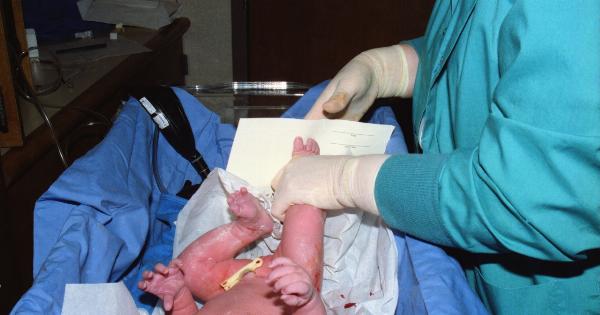Childbirth is a miraculous and awe-inspiring event, but it can also be a challenging and potentially dangerous experience.
With the advancements in medical technology and the understanding of the birthing process, healthcare providers have been striving to ensure the safest possible birth for both the mother and the baby. One such technique that has been gaining popularity is the practice of repositioning the baby before birth to reduce the risk of complications and improve delivery outcomes.
In this article, we present an unbelievable video that showcases the process of positioning a baby for a safer birth.
The Importance of Positioning for a Safer Birth
During pregnancy, unborn babies can assume various positions in the womb.
While the ideal position for a baby’s delivery is head-down, known as vertex presentation, there are instances when the baby may be in a different position, such as breech or transverse. These non-ideal positions can increase the chances of complications during birth, including prolonged labor, fetal distress, and the need for cesarean delivery.
Repositioning the baby before birth involves gentle maneuvers performed by healthcare professionals to encourage the baby to assume the optimal position. These techniques can be done manually or with the help of external aids and devices.
The goal is to guide the baby into the head-down position, ensuring a safer and smoother delivery.
Witness an Unforgettable Birth Experience
In the video below, you’ll witness an incredible birth experience where a baby is positioned for a safer delivery.
This unique footage allows you to observe the skills and techniques used by healthcare providers to assist the baby in assuming the optimal position for birth.
The Technique: External Cephalic Version (ECV)
In this particular video, the healthcare provider performs an External Cephalic Version (ECV), which is one of the most common techniques used to reposition a baby before birth.
ECV involves applying gentle pressure on the mother’s abdomen to encourage the baby to turn into the head-down position, thereby increasing the chances of a safer vaginal delivery.
The Process of ECV
The video begins with the healthcare provider discussing the procedure with the expectant mother, explaining the benefits and risks involved. The mother’s safety and well-being are paramount throughout the entire process.
1. Preparation: The healthcare provider carefully evaluates the baby’s position using ultrasound to determine the best approach for the procedure.
They also ensure that the mother’s condition is suitable for an ECV, considering factors such as the gestational age, previous pregnancies, and any underlying medical conditions.
2. Maternal anesthesia: Before starting the procedure, the healthcare provider administers a regional anesthetic to the mother. This helps to relax the uterine muscles, making it easier to rotate the baby gently.
3. Gentle pressure: The healthcare provider then places their hands on the mother’s abdomen, applying gentle pressure to encourage the baby’s repositioning.
They use their hands and fingers to guide the baby’s head into the vertex position while simultaneously supporting the baby’s body.
4. Continuous monitoring: Throughout the procedure, the healthcare provider closely monitors the baby’s heart rate and the mother’s comfort level.
If any signs of distress are detected, they can quickly adapt the procedure or decide to discontinue it if necessary.
5. Successful repositioning: In this particular video, the healthcare provider successfully repositions the baby into the head-down position.
The mother’s joy and relief are palpable as she realizes the potential benefits of an improved delivery outcome.
The Benefits and Risks
Repositioning the baby for a safer birth through techniques like ECV offers numerous potential benefits:.
- Increased likelihood of vaginal birth
- Reduction in the risk of cesarean delivery
- Shortened labor duration
- Lower chances of fetal distress
However, it’s important to note that ECV also carries some risks:.
- Possibility of temporary changes in fetal heart rate
- Uterine contractions or discomfort for the mother
- Premature rupture of membranes
- Unsuccessful repositioning
The decision to perform an ECV involves a careful assessment of each individual case, weighing the potential benefits against the risks. Healthcare providers always prioritize the safety and well-being of both the mother and the baby.
Conclusion: Witnessing the Miracle
The video showcased in this article provides an astonishing insight into the process of repositioning a baby for a safer birth.
Witnessing this incredible procedure not only highlights the dedication and expertise of healthcare providers but also emphasizes the importance of ensuring the best possible birthing experience for both mother and child.
By understanding and utilizing techniques like ECV, healthcare professionals strive to reduce the risks associated with non-ideal fetal positions, ultimately promoting safer and more successful deliveries.































